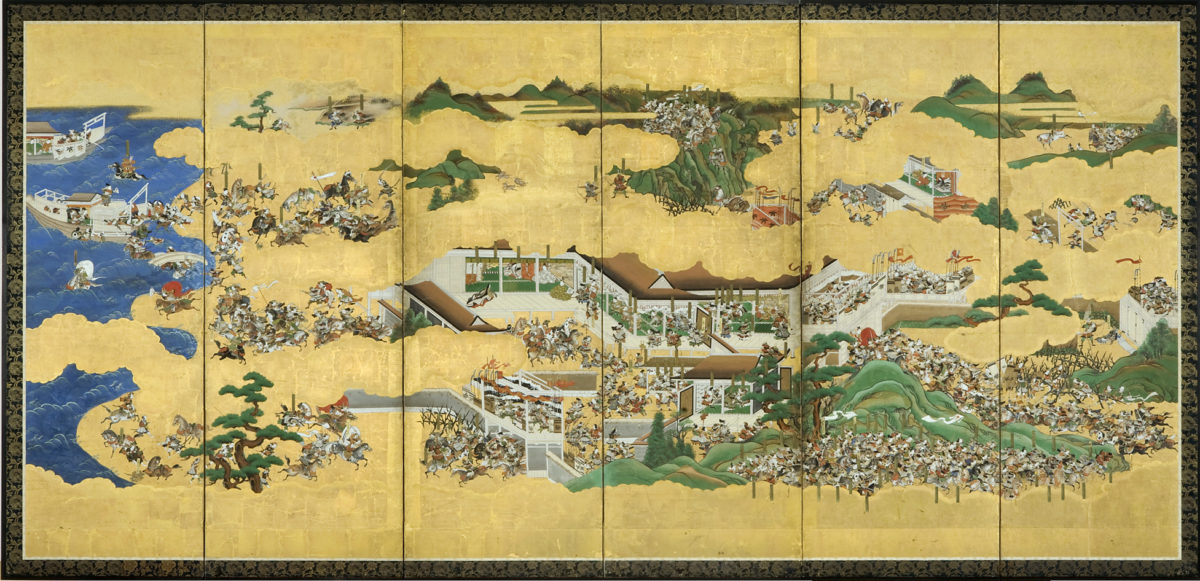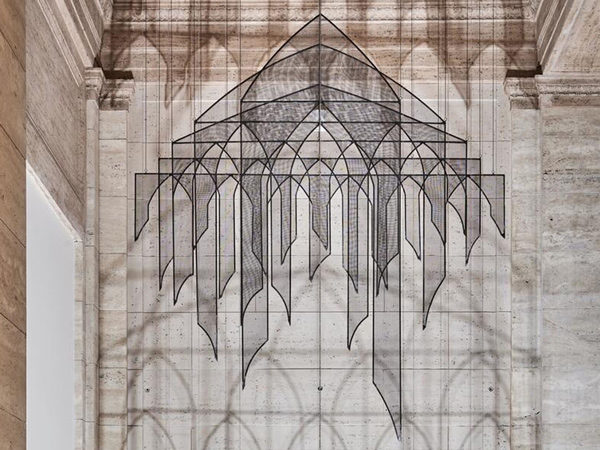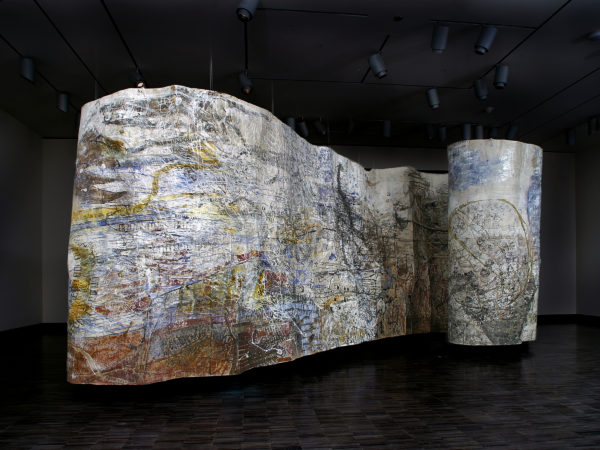Activity
Battles at Ichi-no-tani and Yashima

What is this object? How was it used?
Painted folding screens like this one were commonly used as room dividers and decorative backdrops for ceremonial occasions. This example, probably made for a samurai patron, is decorated with scenes from a popular war tale describing the exploits of legendary warriors. The sumptuous gold leaf background seen here served a dual purpose: symbolically, it makes a statement about the samurai’s wealth and power, but in practical terms it also provided a reflective surface, helping to illuminate the dark interior spaces of the castle.
What is depicted here?
The subject matter is derived from a chronicle of military history known as The Tale of the Heike. Written in the 1200s, The Tale of the Heike recounts the war between two samurai clans, the Taira (or Heike) and Minamoto (or Genji). Imbued with the Buddhist belief in the transience of all wordly phenomena, the Heike focuses on the tragic and triumphant episodes leading up to the fall of the Taira clan in 1185.
This screen highlights the Minamoto assault on the Taira, who have already been routed from the capital, Kyoto, and pushed toward the sea at Yashima. The large building shown at center is the temporary Taira headquarters, where Taira soldiers hold the youthful Emperor Antoku and the imperial regalia. The Minamoto plan to attack this Taira stronghold from the rear, but first they must descend a precipitous cliff, called Ichi-no-tani, shown at top center. This famous scene illustrates the superior military strategy of the Minamoto commander, Yoshitsune, as well as the bravery of his men. First sending some rider-less horses down to test the danger of the slope, Yoshitsune leads his forces down:
The tense riders went down with their eyes closed, encouraging the horses in muffled voices. “Ei! Ei!” The feat they were accomplishing seemed beyond mortal capacity, a fit undertaking for demons.1
A second famous episode appears at the far left side of the screen, where the artist painted a horseman with a billowing red cloak riding toward the sea. Opposite him, in the water is the Minamoto soldier Atsumori, whose white cloak fills the air behind him. Kumagae Naozane, a Taira warrior, is shown waving his fan from the shore, as he calls to Atsumori to return and bravely face the enemy. The story tells us that when Atsumori rides back to shore, Kumagae realizes that his opponent is just the age of his own son, a young man of only sixteen or seventeen. He at first hesitates to kill Atsumori, but seeing the Minamoto forces coming toward him, he decides that duty dictates he take the young man’s life:
I would like to spare you,” he said, restraining his tears, “but there are Minamoto warriors everywhere. You cannot possibly escape. It will be better if I kill you than someone else does it, because I will offer prayers on your behalf. 2
How can you tell who is who?
The forces of the Minamoto (or Genji) fly white banners, while the Taira (or Heike) display red banners. Small rectangular labels affixed to the screen’s surface are inscribed with the names of the most famous warriors.
What is the mood of this painting? What does it tell us about samurai values?
The mood is generally positive, emphasizing the warrior’s nobility and bravery rather than focusing on the savagery of warfare. There is little gratuitous violence: scenes of decapitation, though a frequent feature described in the chronicle, are here kept to a minimum. In the scene of Kumagae’s encounter with the young soldier Atsumori, we are shown the moment when Kumagae calls out from the shore, rather than the moment of Atsumori’s death. The screen seems to present an ideal version of the samurai code of conduct, or bushido. By presenting the desirable aspects of warrior behavior in an entertaining form, the artist helped to promote these principles in an era, the Edo period (1615–1886), approximately 500 years after the The Tale of the Heike was written, when samurai were not often called upon to use their weapons.
1: Helen Craig McCullough, trans., The Tales of the Heike (Palo Alto: Stanford University Press, 1988), 311.
2: McCullough, Heike, 317.







